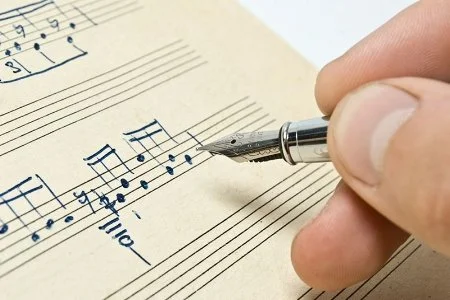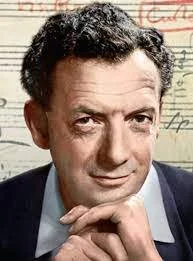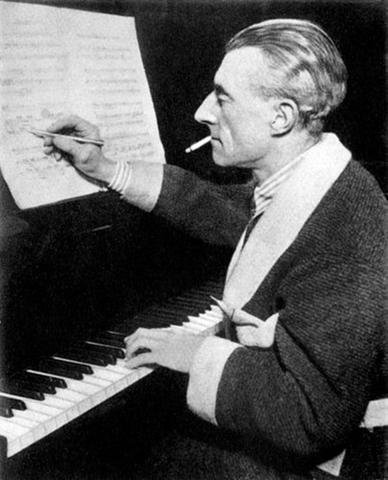What I Wish Composers Knew About Composing for Orchestra
/So you think you’re ready to compose an orchestral work? Bravo!! However, there are some things you should know.
FIRST THINGS FIRST…
Before writing a single note, you absolutely need a very strong, multi-faceted background in orchestration. This starts with serious formal study and in-depth analysis of orchestral scores, preferably under the guidance of an inspiring teacher who is also a composer.
Books such as Samuel Adler’s The Study of Orchestration and Samuel Solomon’s How to Write for Percussion are good reference sources when questions of range or playability arise. Another entertaining and interesting book is Norman del Mar’s Anatomy of the Orchestra, which is informed by its author’s long, productive conducting career.
However, you only truly learn your way around the orchestra by immersing yourself in it in person. Ideally, you should play in an orchestra yourself, regardless of its artistic level. However, whether you play an orchestral instrument or not, observing orchestra rehearsals and concerts with the score in hand is a must.
Most important, don’t be shy about picking the brains of instrumentalists about what works on their instrument and what doesn’t; most players are flattered if you ask their advice.
SOFTWARE
On balance, the benefits of composing software such as Sibelius, Dorico and musescore outweigh the disadvantages. Cleanly printed scores and parts result in more efficient rehearsals and can minimize the possibility of misreadings. But…
In the days before software, when scores and parts were written out by hand, composers faced a big decision: whether to write transposing instruments at their written or sounding pitch, the latter resulting in what’s generally referred to as a “score in C.” The choice really boiled down to where the composer would make their mistakes. In a transposed score, any transposition errors in the score could also unwittingly appear in the parts. With a score in C, the initial composition might be easier but the parts would still have to be transposed, leaving open the possibility of errors. Even with software you still face the same issue; it’s just that software allows mistakes in the score to be transferred into the parts quicker than they could be by hand.
For whatever it’s worth, my personal preference is for a score in C, as it helps my learning process go faster. However, many conductors prefer a score in which they are seeing exactly what the players are seeing. There is no perfect choice; it’s simply a matter of preference.
Speaking of perfect, software is definitely NOT. For example, some composers using Sibelius have had difficulty formatting parts or scores in unconventional layouts. I have found some scores created with Sibelius to be rife with misspellings of accidentals; an extreme example would be an F major scale with the fourth degree notated as A#.
So, you must NEVER completely trust the software; the saying “garbage in, garbage out” absolutely applies. Using software does NOT absolve you from the responsibility of careful proofreading. YOU who are ultimately responsible for the accuracy—or lack thereof—of your score.
MIDI
Like composing software, MIDI can make the composition process go much smoother. However, in my experience composers working with MIDI often do not consider that the results can bear little resemblance to what human beings can reasonably be expected to play. I once conducted a piece whose score contained obvious “MIDI tempi,” resulting in completely unrealistic metronome speeds. I had to tell the composer that the orchestra would be lucky to achieve two-thirds the tempi he had written.
SPEAKING OF METRONOMES…
A prominent conductor once quipped that “the road to musical hell is paved with metronomes.” He certainly didn’t mean that a metronome is useless but rather that no machine can accurately dictate a proper tempo for every performance.
The tempo decision is the most crucial one any conductor—or any musician, for that matter--makes. It’s not just a question of “too fast” or “too slow.” Rather, the tempo decision is the summation of everything the conductor knows about the piece. Conductors must also consider such mundane matters as the technical ability of the players, the instruments they are playing (many a performance has been undermined by a weak-sounding celeste or an unstable set of timpani), the acoustics of the hall and much more.
You’ll get better results if you provide a flexible range of metronome speeds (i.e. ♩=120-126) or precede the metronome mark with “circa” or “approx.” Keep in mind that even the best composers have found it necessary to modify their ideal tempi after hearing their music played live, just as conductors learn which composers’ metronome speeds can mostly be believed (i.e. Britten) and whose can be safely ignored (i.e. Schoenberg).
PERCUSSION
The standard of percussion playing has risen to astronomical heights in recent decades, to the point that some college and even some high school percussionists can play at a level previously achieved only by seasoned professionals. However, this welcome development has led some composers to write parts that are so dense with different but similar-sounding drums or with fast instrument switches that they are practically unplayable.
I recently conducted a piece by a well-known composer that was originally written for an outstanding group of virtuoso new music specialists. The percussion parts consisted of thirty-four different instruments to be covered by two players over eight minutes with barely any time between switches. We ended up dividing the two parts among four very good players but even then, there were difficulties. So, if you want more than one performance of your piece (who doesn’t?) it pays to think beyond the first one.
IT'S SHOWTIME !
Sadly, many conductors are not seriously committed to performing newly composed music. They might be adept at “getting through” rehearsing and performing a new piece relatively unscathed, but that’s all they can offer.
Happily, many conductors (including me and many of my colleagues) relish the challenge of conducting newer music and truly want to serve living composers with the same devotion we bring to a Beethoven symphony.
Realize that you will likely encounter both kinds of conductors. With the first kind you’ll need to be extra tactful, while the second kind will be eager to know in detail how to improve the final product.
Similarly, even conscientious conductors have learned that there are really only two kinds of composers: those who accurately hear what the orchestra is playing and those who are so wrapped up in how they imagine their piece to sound that they are not remotely in touch with musical reality.
You can train yourself to be that first kind of composer, but to do so you must first realize that you will be shocked and overwhelmed the first time you hear any piece of yours. With professional orchestras where rehearsal time is both limited and expensive, you must accept that the conductor and orchestra will probably not be able to fix everything that’s wrong. In such cases, think of yourself as an emergency room doctor who must quickly triage what you are hearing and isolate the most important errors to bring to the performers’ attention.
SO…
Composing a piece for orchestra is an irresistible challenge. I’m glad you’ve found it irresistible because your desire to revel in the modern orchestra’s tonal and expressive possibilities will help refresh the repertoire and that, in turn, will keep orchestras alive and relevant. Composers and performers desperately need each other, but it’s usually up to the composer to make the first move by creating music that will inspire performers to bring it to life and communicate it convincingly to an audience.
Good luck!
July 2025
Originally published by Ascenda Music Publishing (https://ascendamusic.com/blog/)





